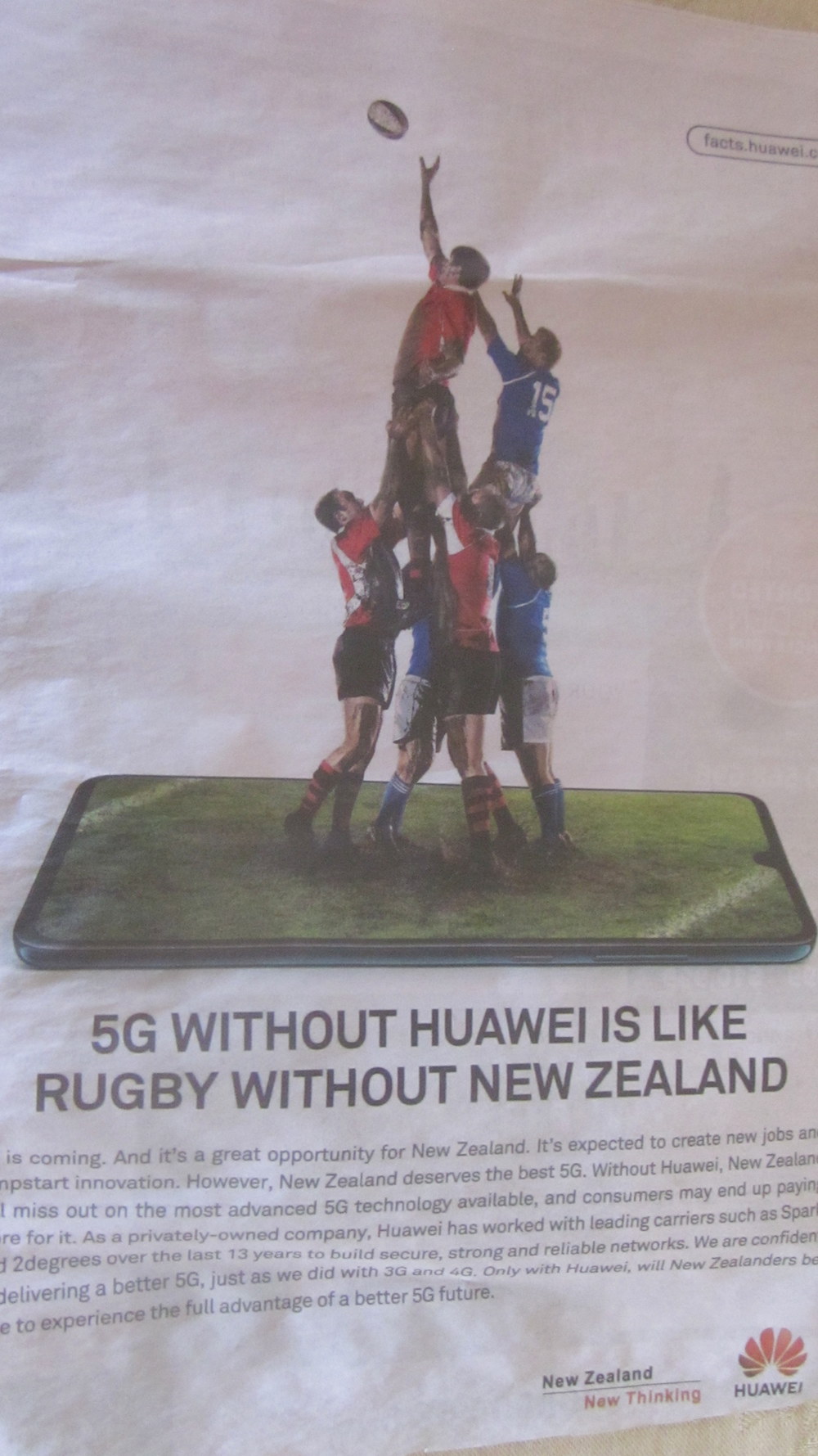North America bickered over dairy tariffs while China swamped their Telecoms manufacturing sector
Canada’s detention of Meng Wanzhou, the daughter of the Huawei founder indicates a non-negotiable priority by the United States to exclude the Chinese equipment supplier from any network backbone installations within the Western alliance.
Canada’s own priority on identity and diversity affirmative action would normally have stayed its federal hand in apprehending any such female in any such claim at all.
Meng Wanzhou (pictured) is also said to be the financial supremo of Huawei.
Huawei is the nosecone of the Chinese strategy of installing the nation at the forefront of world telecommunications.
Coupled with China taking over as the pre-eminent global supplier of nuclear power utilities, the rapid emergence of the Chinese in short and long haul telecommunications came as a surprise to the Western alliance which on instructions from Washington has now erected stumbling blocks to China securing this particular advance.
China is pushing out North American suppliers and closely allied ones as Japan’s NEC which has for example dominated New Zealand for a generation, and which used the South Pacific nation as the test-bench for its NEAX series
Britain though has left its door ajar to Huawei (means “can-do”) which operates in the UK as a sincerity of purpose showcase a proving establishment to demonstrate that its equipment is free of taps and the capability of subsequently inserting them.
In networks one organisation’s spyware is another’s customer research analysis tool.
Eavesdropping is a contingency.
Signals interception however is priced into any wide area network from any supplier from anywhere just because its components are drawn from so many sources, notably from the United States.
This includes Huawei’s which however under China’s national plan intends to become totally self sufficient in the medium to longer term.
From a national security point of view and rather more relevant there remains the threat of a wide area network supplier from a potentially hostile nation disabling it should its government call upon it to do so.
Spark is now one of several telcos competing in a deregulated New Zealand.
It is though the inheritor of the old technology-led state controlled sole operator and as such has special value to technology suppliers as a reference site.
The Huawei imbroglio as far as the Western alliance is concerned turns also on China’s known policy of picking up technology tips wherever, and whenever it can and also by whatever means available.
There remain in all this the confusingly unacknowledged linguistic vacuum between China and the West.
The Chinese constant national and avowed purpose of identifying and then lifting western innovation however obtained in order to transfer it into its own technology is often interpreted in a wider espionage context.
A local example of this in an applied industrial lift was during the era in which New Zealand’s Hutt Valley industrial zone was a global leader in digital screen formatting.
Here, the Chinese in the shape of a number of its agencies were very much in evidence as prospective technology acquirers and obtained underpinning technical data under the guise of buying the finished product.
One nation’s pirating is another’s technology transfer.
Japan’s NEC in becoming the central supplier to the former New Zealand state-owned Telecom Corporation established a flourishing local joint venture company developing applications for the then ground breaking NEAX equipment.
The research and development gathered by this local subsidiary will not be discounted by the Chinese in seeking the Spark contract
The intransigence of the United States and its severity of purpose in causing to be apprehended in Canada Meng Wanzhou and its indifference to the inevitable subsequent counter detention tit-for-tat reprisals from China indicates that New Zealand is trapped inextricably in a great power squeeze.
One that occurs at an already strained time.
The New Zealand free trade agreement with China, the signature achievement of the Helen Clark led Labour government, was starting to show signs of fraying at a number of edges and even before the US inspired Huawei fracas.
New Zealand in recent times has acquired a reputation for innocence bordering on cupidity in its dealings with China.
An example was the loss of an approximately half billion dollar dairy processing investment in China.
This occurred when it was discovered that there was no corresponding inward financial investment to counterbalance it and thus no asset to be recovered in the ensuing default.
Regardless of the price performance of the Huawei equipment over anyone else’s it is hard to see the United States easing its pressure on its allies in acquiring it and this especially applies to New Zealand which has already driven the US to distraction in technology terms with its no-nuclear stand.
Meng Wanzhou, who was arrested Dec. 1 last year and who remains under house arrest in Vancouver, is facing U.S. charges related to possible violations of trade sanctions on Iran
Canada’s willingness to antagonise its huge Chinese population in Vancouver along with what many view as the kidnapping, if not the taking hostage, of the heir to a company the size of Huawei indicates that there is a shared North American interest in the warning shot across the bows of Huawei.
China shimmied up the value chain from whiteware and consumer electronics through automotive and machine tools to the point at which it now confronts North America in the key area of telecommunications.
In the past the United States and Canada from a trade point of view have publicly bickered about things such as dairy exports.
While this spat was going on Huawei eased its way past the telecoms technology manufacturing leaders, the ones in Scandinavia, Germany, and France.
Then crossing the Atlantic Huawei became not so much the enemy at the gate, but one securely and even comfortably yet not showily established inside it.
The incursion by the Chinese into mainstream telecommunications in which the United States and Canada have long staked out such huge claims now looks like the common interest, the external threat that caused the two neighbours to bury the trade hatchet.
The arrival of telecommunications in the strategic category introduces a new element in the trade war just because it vaults it over and above the usual tactics, cut-and-thrust, of customs duties, tariffs, quotas and licenses, and even embargos
A mystery in all this is why the two North American nations, United States and Canada, were preoccupied with each other over things like milk filtration quotients while their combined telecom equipment manufacturing sectors were being quietly swamped by the Chinese.
In the meantime smaller members of the Washington-based western alliance, notably New Zealand, are in the helpless position of someone inside a Chinese-manufactured domestic washing machine in full rotation of the type that president Trump wants to keep out of American households.
In the lost in translation sphere there also is the matter of the generalised accusations about this or that Chinese company being close to the government if not actually part of it.
This holds little water as far as China is concerned.
United States EXIM Bank is but one example of government intervention in the West.
Locally, Telecom Corporation, the monopoly supplier within comfortable career memory, is one such governmental example on the New Zealand side, Solid Energy much more recently another example of state participation, and there remain of course the official State Owned Enterprises.
One interpretation is solid though and it is that in 2019 the year in the integration of the free trade agreement between New Zealand and China the unexpected has intervened in the form of the United States.
Huawei meanwhile reinforces its generic status by going straight to the public by proclaiming in folksy vernacular full page adverts (below) that denying the nation the Huawei product line “is like rugby without New Zealand.”
In the ensuing techno-diplomacy the challenge, a real one this time, will be to sidestep any obvious offside position with any of the opponents.


